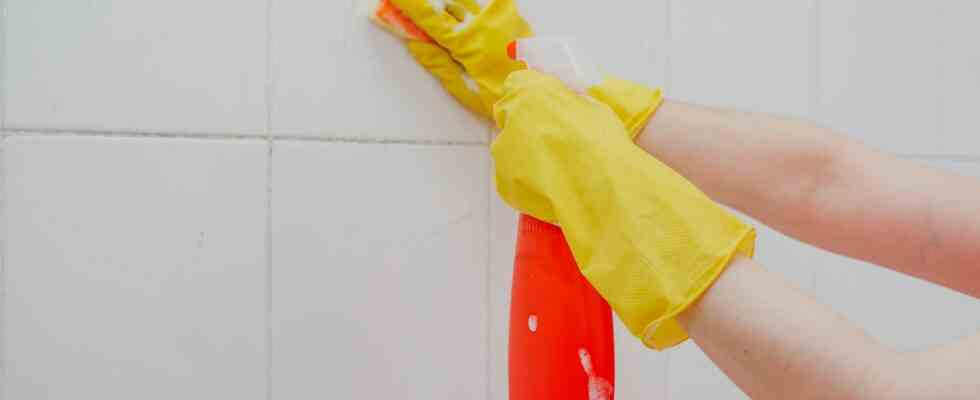Clean tiles
Joint cleaner for the bathroom and kitchen: This is how dirty gaps become clean again
Dirt, mold and mold stains can be removed more easily with a grout cleaner
© golibtolibov / Getty Images
Limescale, grease and dirt residues accumulate in the gaps between tiles over time. In the worst case, mold can even form on it. It is all the more important to regularly clean the joints in the bathroom or kitchen.
Due to the permanently high humidity in the bathroom or particularly hard water, unsightly deposits settle on the joints, which provide an ideal breeding ground for mold. And the tiles in the kitchen are not safe from unsightly deposits either: Here it is primarily grease and dirt residues that collect in the gaps when cooking. Unfortunately, these processes cannot be stopped, no matter in which room – but you can still clean the yellowed joints: either with a special cleaner or alternative (household) means. We’ll tell you what they are.
How to use a grout cleaner
A commercial one grout cleaner mostly contains basic and fat-dissolving ingredients to remove dirt residues, oily deposits, soap residue and – depending on the manufacturer – also mold from the gaps. To do this, the agent must be sprayed directly onto the joints and (depending on the degree of soiling) allowed to act for several minutes. The gaps should then be reworked with a sponge, cloth or brush to remove stubborn dirt. At the end, the joints are rinsed with fresh water and the entire process is repeated if the result is not satisfactory.
Why a joint brush makes sense
Toothbrushes are often misused to clean the joints. Their small bristles fit perfectly into the gaps and can therefore reach all deposits – however, the effort is enormous if you want to clean an entire tiled area. Distributing a grout cleaner is much easier with a special grout brush: it has more bristles than a toothbrush, is significantly larger and usually has a practical handle – like this model. Alternatively, you can also use the so-called Fugue torpedo use a special cleaning system that became known through the start-up show “Die Höhle der Löwen”.
And this is how the cleaning system works: The use of industrial diamonds, which act as abrasives, is intended to remove superficial and deep-seated impurities from the gaps. How this looks in practice is explained in the following instructions.
- The system includes multiple sharpening stones of different widths – choose a bridge that suits your joints.
- Slowly slide the desired sharpening stone into the groove of the handle until the bridge snaps into place.
- Carefully move the Fugen torpedo across the gaps while applying light pressure.
- Replace the whetstone with the associated joint brush and clean the gaps.
- Impregnate the clean (and dry) spaces with a special joint protection pen.
Alternatives to grout cleaner
steam cleaner
Stubborn dirt can be removed from the joints with hot steam. To use this method, you need one steam cleanerwhich you can operate by hand and thus treat individual joints selectively.
dirt eraser
Actually, he serves fine-pored sponge for treating stains on the walls, but can also be used as a grout cleaner – at least for slight discolouration in the gaps.
scouring milk
As the name suggests, this one will cleaning supplies used for scrubbing. This makes it easier to remove stubborn encrustations with the small polishing particles, including those that form in the joints.
Important NOTE: Vinegar is a tried and tested household remedy that is often used as a grout cleaner. Note, however, that not all surfaces tolerate the acid – such as grout. The calcareous material would be attacked by the vinegar and become porous. For silicone joints, on the other hand, vinegar is very suitable for removing mold.
You might also be interested in:
This article contains so-called affiliate links. There is more information here.


